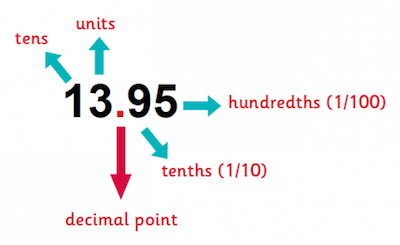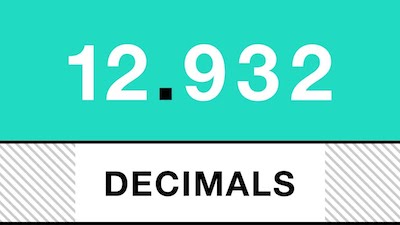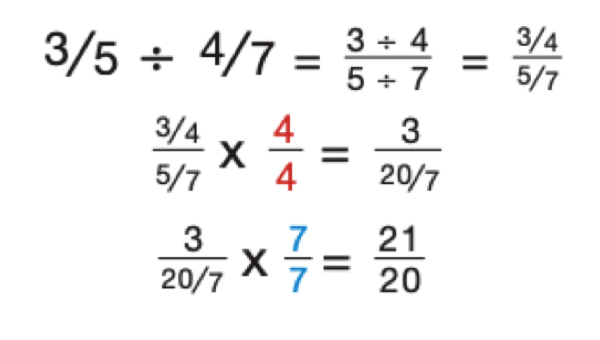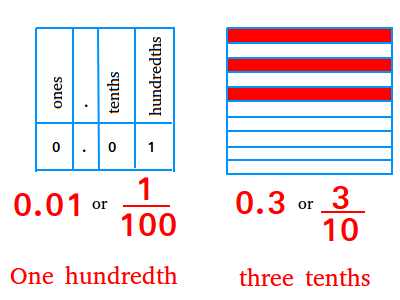As you probably already know, fractions and decimals are simply two different ways to represent parts of a whole number.
In what concerns to decimals and especially when you are working with decimals, it is important to keep in mind that they are a way to express tenths, hundredths, thousandths (and beyond) of a unit.
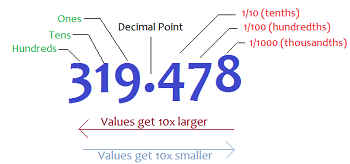
Learn more about fractions here.
While working with decimals may look a bit complex at the beginning, you just need to look at them as numbers that obey rules like other numbers.
Working With Decimals
#1: Adding And Subtracting Decimals:
As we already mentioned above, decimals are just like other numbers. So, if you were adding numbers without decimals, you would start with the units, and move along to tens, then thousands, and so on. The same rule applies if there are decimals. So, you should add them first, then units, then tens, and so on.
The most important rule about adding and subtracting decimals is that you always need to line up the decimal point in your calculation. This ensures that the decimal point in the answer also lines up with the decimal points above it.
Example #1: Simple Addition Of: 123.5 + 234.2
As for any addition calculation, align the numbers and add the columns starting from the right.
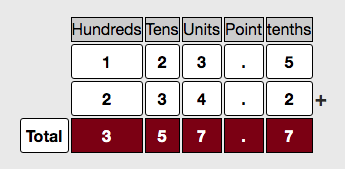
123.5 + 234.2 = 357.7
Check out our decimal to fraction calculator.
Example #2: Addition With Different Decimal Places: 234.8 + 147.96
In this example, we are adding a number that has one decimal place to a number that has two decimal places.
If you remember, it doesn’t matter how many decimal places we are dealing with, or whether the numbers involved have a different amount of decimal places. The most important part of the calculation is to line up the decimal points. If it helps you to line up the columns, you can write a zero in the hundredths column of the first number, or you can leave that box empty.
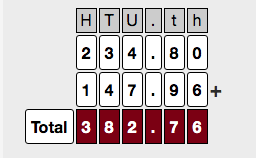
234.8 + 147.96 = 382.76
Example #3: Subtraction: 72.347 − 64.012
Subtract in the same way as with whole numbers, but make sure the decimal place is in the right place.
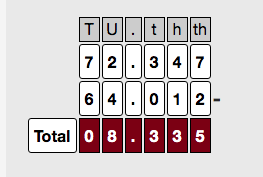
72.347 − 64.012 = 8.335
Looking for a powerful and simple fraction to decimal calculator?
#2: Multiplying Decimals:
No matter if you are multiplying or dividing decimals, you need to know that the calculation works in the same way as with whole numbers. So, simply out, you will need to multiply the numbers as if the decimal point wasn’t even there.
At the end of the calculation, we make sure that we have the decimal point in the correct place in our answer. Starting with the answer that you have obtained by multiplying the numbers, move the decimal point the same number of places to the left as there are numbers after the decimal point in the two factors.
Example #1: Multiply: 0.5 x 0.5
5 x 5 is 25.
Since there are two numbers after the decimal point, one in each of the multiplying numbers, so move the decimal point two places to the left, from 25, and the answer is 0.25.
Example #2: Multiply: 1.2 x 0.25
If you remove the decimal points, you get:
12 x 25 = 300
This time, there are three digits after the decimal place in the multiplying numbers, one in 1.2 and two in 0.25.
The decimal point in 300 is after the second zero, making it 300.0
Move the decimal point three places to the left, and the answer is 0.3.
#3: Dividing Decimals:
Let’s say that you want to know the result of 50.22 ÷ 0.2.
If you’re using the standard format for division, where your answer goes above a line over the number you’re dividing, then the decimal point goes exactly above the one in the number you’re dividing:

You can simplify this calculation if you multiply 0.2 by 10 once to make 2. You therefore multiply 50.22 by 10 as well, to get 502.2.

